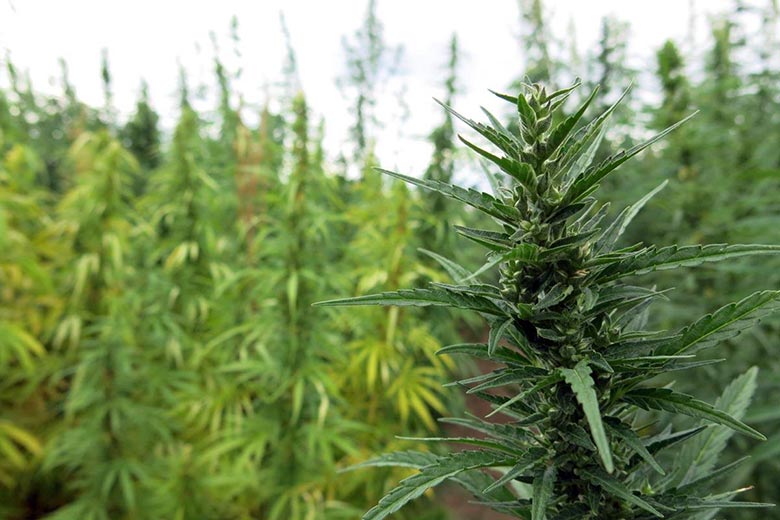Robert Celt
New Member
Oregon has been on the cutting edge of the debate on legalizing weed and industrial hemp farming. Oregon was one of the first states to pass legislation that allowed the production of industrial hemp.
Here are a few facts about Oregon's legalization effort.
1. The Oregon Legislature made industrial hemp production legal in 2009 when Senate Bill 676 passed, but the first licenses were not issued until 2015.
2. Oregon sold 13 licenses to farm industrial hemp in 2015, according to the Portland Business Journal. The licenses were valid for three years and sold for $1,500 a piece.
3. After the initial sale of licenses, the Oregon Department of Agriculture postponed additional sales of the three-year licenses in order to keep current with changes in the industry.
Beginning with the 2016 growing season, Oregon would only issue annual licenses at a cost of $500. The 13 original permits would be honored until expiration in 2017.
4. To farm industrial hemp in the state of Oregon, one must submit an application form and be approved to get a license or permit to farm the crop.
5. Although Oregon has relatively relaxed laws on hemp and marijuana in general, the state holds fairly strict and specific rules about growing and handling hemp.
According to ODA, "Oregon's industrial hemp law allows for hemp seed to only be used to plant new crops. The size of the industrial hemp crop of a grower must be at least 2.5 contiguous acres."
6. According to ODA, "individuals can apply for licenses to grow or handle industrial hemp fiber and for permits to grow and handle agricultural hemp seed, in which case a license is also required."
7. In 2015, there was another challenge to industrial hemp farming in Oregon. Three counties (Douglas, Josephine, and Jackson) were worried that industrial hemp farms would contaminate existing cannabis farms that produced legal medical and recreational marijuana for sale in Oregon, according to the Portland Business Journal.
The state Senate in a bipartisan effort failed the subsequent Senate Bill 2668, 13 to 17.
The Oregonian reported that the bill "would have placed a two-year moratorium on most hemp production in Oregon while cross-pollination concerns were worked out with marijuana growers."
According to the paper, the Senate decided to let the issues be worked out by ODA.
8. The early returns from the new legislation were modest. According to Capital Press, only about a quarter of the initial licensees produced a harvest, despite two-thirds of the group planting.
Two other yields were embargoed, according to the paper, because the hemp crops' THC count exceeded the legal limits Oregon allows for industrial hemp.
The plants had to be "destroyed or remediated in some way ... perhaps by using the plant stalks without the flowers or seeds."

News Moderator: Robert Celt 420 MAGAZINE ®
Full Article: Legalizing Weed: 8 Facts About Oregon's Legalization Of Industrial Hemp Farming
Author: Drew Walker
Contact: NewsMax
Photo Credit: Luke Runyon
Website: NewsMax
Here are a few facts about Oregon's legalization effort.
1. The Oregon Legislature made industrial hemp production legal in 2009 when Senate Bill 676 passed, but the first licenses were not issued until 2015.
2. Oregon sold 13 licenses to farm industrial hemp in 2015, according to the Portland Business Journal. The licenses were valid for three years and sold for $1,500 a piece.
3. After the initial sale of licenses, the Oregon Department of Agriculture postponed additional sales of the three-year licenses in order to keep current with changes in the industry.
Beginning with the 2016 growing season, Oregon would only issue annual licenses at a cost of $500. The 13 original permits would be honored until expiration in 2017.
4. To farm industrial hemp in the state of Oregon, one must submit an application form and be approved to get a license or permit to farm the crop.
5. Although Oregon has relatively relaxed laws on hemp and marijuana in general, the state holds fairly strict and specific rules about growing and handling hemp.
According to ODA, "Oregon's industrial hemp law allows for hemp seed to only be used to plant new crops. The size of the industrial hemp crop of a grower must be at least 2.5 contiguous acres."
6. According to ODA, "individuals can apply for licenses to grow or handle industrial hemp fiber and for permits to grow and handle agricultural hemp seed, in which case a license is also required."
7. In 2015, there was another challenge to industrial hemp farming in Oregon. Three counties (Douglas, Josephine, and Jackson) were worried that industrial hemp farms would contaminate existing cannabis farms that produced legal medical and recreational marijuana for sale in Oregon, according to the Portland Business Journal.
The state Senate in a bipartisan effort failed the subsequent Senate Bill 2668, 13 to 17.
The Oregonian reported that the bill "would have placed a two-year moratorium on most hemp production in Oregon while cross-pollination concerns were worked out with marijuana growers."
According to the paper, the Senate decided to let the issues be worked out by ODA.
8. The early returns from the new legislation were modest. According to Capital Press, only about a quarter of the initial licensees produced a harvest, despite two-thirds of the group planting.
Two other yields were embargoed, according to the paper, because the hemp crops' THC count exceeded the legal limits Oregon allows for industrial hemp.
The plants had to be "destroyed or remediated in some way ... perhaps by using the plant stalks without the flowers or seeds."

News Moderator: Robert Celt 420 MAGAZINE ®
Full Article: Legalizing Weed: 8 Facts About Oregon's Legalization Of Industrial Hemp Farming
Author: Drew Walker
Contact: NewsMax
Photo Credit: Luke Runyon
Website: NewsMax


